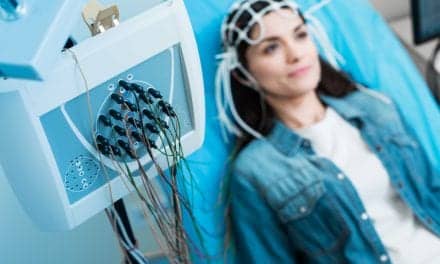Advances in sleep apnea treatment alternatives
With at least 30% of sleep apnea patients unable to tolerate CPAP, a large portion of this population is left seeking an alternative. While options such as oral appliances do exist, researchers are still in search of yet more treatments to better fit the individualized needs of sleep apnea patients. New therapies gaining traction, particularly in recent months, include topical and intravenous therapies, exercise programming, and treatments developed through understanding the genetic basis of sleep apnea.
In a novel approach to treat sleep apnea using topical administration of a compound called AVE0118, researchers Wirth et al were able to increase upper airway reflex activity in anesthetized pigs. The compound showed potential to treat sleep apnea by sensitizing the mechanoreceptor reflex and abolishing upper airway collapsibility for more than 4 hours.1 “The paper describes an important new possibility—that topical sensitization of upper airway reflexes is a principle that could be used to treat OSA,” David Hillman, MBBS, stated in an accompanying editorial.2 Hillman expects to see more research on this treatment possibility in the future.
In another sleep apnea treatment approach, researchers used GAL-021, an investigational drug delivered by intravenous administration, to reverse respiratory depression. The researchers studied 12 people with both normal and elevated carbon dioxide levels who were given alfentanil, a potent opioid analgesic drug. Next, two dose-levels of alfentanil and two dose-levels of GAL-021 were administered. In this study, GAL-021 successfully protected against the opioid-induced respiratory depression while not affecting analgesia. According to Sigrid Veasey, MD, associate professor of medicine at the University of Pennsylvania’s Center for Sleep and Circadian Neurobiology, “The demonstration that Galleon’s first clinical candidate can regulate respiratory drive is an important milestone for the oral drug candidates that may have utility for sleep apnea patients seeking an alternative to mask-based positive-pressure machines.”
Advances in exercise programming for the treatment of sleep apnea also have been made recently. In May, Kuna et al3 reported results from the Sleep AHEAD trial where 264 obese adults with type 2 diabetes and OSA were studied in a randomized controlled trial with follow-up at 1, 2, and 4 years. Participants underwent intensive lifestyle intervention with a behavioral weight loss program or diabetes support and education. At the 4-year follow-up, nearly 21% of intensive lifestyle intervention participants had complete remission of OSA compared to only 3.6% of participants in the control arm. Unexpectedly, the researchers also found that “Beneficial effects of intensive lifestyle intervention on apnea hypopnea index at 1 year persisted at 4 years, despite an almost 50% weight regain.”
The authors suggest that since vigorous physical activity was a component of the intensive lifestyle intervention, increased physical activity might have accounted for this finding.4 According to a commentary on the research, the findings “set the stage for continued research designed to explore the most effective treatment strategies for reducing OSA with regard to exercise programming.”
Still in its early stages, researchers in the Sleep Apnea Genetics International Consortium (SAGIC) are embarking on a massive undertaking to gather genetic, genomic, and phenotypic data on sleep apnea patients in order to determine the genetic basis of the disease. “This information could then lead to better ways of treating these patients,” said Ulysses Magalang, MD, director of the Sleep Disorders Center at The Ohio State University Wexner Medical Center, a member institution of SAGIC.
The above research sets the stage for new treatment options for sleep apnea patients, giving them promising alternatives beyond the mask.
References
1. Wirth KJ, Steinmeyer K, Ruetten H. Sensitization of upper airway mechanoreceptors as a new pharmacologic principle to treat obstructive sleep apnea: investigations with AVE0118 in anesthetized pigs. SLEEP. 2013;36(5):699-708.
2. Hillman D. A new pharmacological treatment to treat obstructive sleep apnea? SLEEP. 2013;36(5):635-636.
3. Kuna ST, Reboussin DM, Borradaile KE; et al; Sleep AHEAD Research Group. Long-term effect of weight loss on obstructive sleep apnea severity in obese patients with type 2 diabetes. SLEEP. 2013;36(5):641-649.
4. Dobrosielski DA, Patil SP. Weight loss and obstructive sleep apnea: what lies AHEAD? SLEEP. 2013;36(5):627-629.


